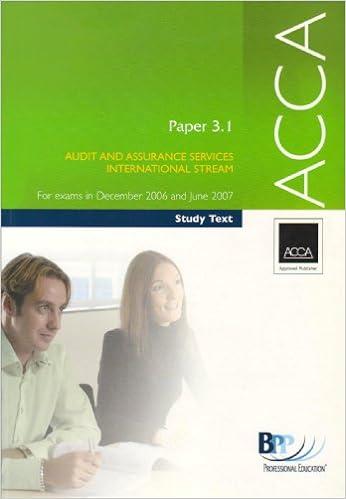Answered step by step
Verified Expert Solution
Question
1 Approved Answer
Please assist on this Question. Question 1 Activity based costing (50 marks) Southern Salt Company produces Three grades of Salt for the catering industry COARSE,

Please assist on this Question.
Question 1 Activity based costing (50 marks) Southern Salt Company produces Three grades of Salt for the catering industry COARSE, FINE and HERBAL. All are packaged in similar containers. They currently use a Traditional Absorption Costing System with overheads allocated to products, based on direct labour hours. They are considering changing to ABC and have undertaken an activity analysis which reveals that the products use some resources in proportions unrelated to production volumes In a typical month, the company produces 5000 units of Coarse Salt, 10 000 units of Fine Salt and 500 units of Herbal Salt, each with a selling price of R220, R250 and R350 respectively. The direct material utilized for each variant of salt is 50 kg per unit and the direct material cost per unit is R100 for Coarse and Fine Salt and R 150 for Herbal Salt The direct labour hours required to produce one unit of Coarse Salt is 0.5 hours, 0.6 hours for Fine Salt and 0.7 hours for Herbal Salt. The direct labour cost for each variant of salt is R20, R24 and R30 for Corase Salt, Fine Salt and Herbal Salt respectively. The machine hours per unit for each variant of salt is 0.10 hours, 0.15 hours and 0.20 hours for Coarse Salt, Fine Sat and Herbal Salt respectively There are 20 material requisitions per month for each variant of salt and the number of production runs per month are 10 for both Coarse and Fire Salt and 5 for Herbal Salt The following table gives the overhead costs by activity for a month. Material stores R120 000 Supervision R531000 Product handling R232500 Production bached R187 500 Machine related R504000 Required Page 5 of 7 (a) Calculate the total cost and profit per unit for each product using the present costing system (20) (b) Identity cost drivers for each activity, and calculate the total cost and profit per unit for each product using activity-based costing. (20) (c) Comment on the changes in profitability of each product and provide recommendations based on your answers in (a) and (b) aboveStep by Step Solution
There are 3 Steps involved in it
Step: 1

Get Instant Access to Expert-Tailored Solutions
See step-by-step solutions with expert insights and AI powered tools for academic success
Step: 2

Step: 3

Ace Your Homework with AI
Get the answers you need in no time with our AI-driven, step-by-step assistance
Get Started


